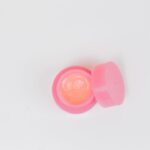When you consider laser hair removal, it’s essential to grasp how the process works. At its core, laser hair removal utilizes concentrated beams of light to target and destroy hair follicles. The pigment in the hair absorbs this light, which generates heat and ultimately damages the follicle, inhibiting future hair growth.
This method is particularly effective for individuals with darker hair and lighter skin, as the contrast allows the laser to focus more effectively on the hair without affecting the surrounding skin. The procedure typically involves a series of sessions, as hair grows in cycles, and not all hair is in the same growth phase at any given time. You may find that multiple treatments are necessary to achieve optimal results.
Each session can last anywhere from a few minutes to over an hour, depending on the area being treated. As you prepare for your sessions, understanding the technology behind laser hair removal can help you feel more confident in your decision and set realistic expectations for the outcomes.
Key Takeaways
- Laser hair removal targets hair follicles with concentrated light to inhibit future hair growth
- Shave the treatment area before the appointment and avoid sun exposure and tanning products
- Apply aloe vera or cold compress to soothe any redness or irritation after treatment
- Potential side effects may include redness, swelling, and temporary pigment changes
- Use sunscreen and moisturize regularly to maintain smooth results and protect the skin
Preparing for Laser Hair Removal Treatment
Preparation is key to ensuring a successful laser hair removal experience. Before your first appointment, you should schedule a consultation with a qualified practitioner. During this meeting, you’ll discuss your medical history, skin type, and hair characteristics.
This information is crucial for determining the most suitable laser technology for your needs. You may also be advised to avoid sun exposure and tanning products for several weeks leading up to your treatment, as tanned skin can increase the risk of complications. In the days leading up to your appointment, it’s advisable to refrain from waxing or plucking hairs in the treatment area.
Shaving is typically recommended instead, as it leaves the hair follicle intact while removing the visible part of the hair above the skin. This allows the laser to effectively target the follicle during your session. Additionally, you should avoid using any products that could irritate your skin, such as retinoids or exfoliants, as these can increase sensitivity during treatment.
Post-Treatment Care Instructions

After your laser hair removal session, following proper post-treatment care is essential for achieving the best results and minimizing discomfort. Initially, you may experience some redness or swelling in the treated area, similar to a mild sunburn. Applying a cool compress can help soothe any irritation and reduce inflammation.
Your practitioner may also recommend using aloe vera gel or a gentle moisturizer to keep the skin hydrated and promote healing. It’s crucial to avoid sun exposure for at least a few weeks following your treatment. Your skin will be more sensitive during this time, and exposure to UV rays can lead to pigmentation changes or other complications.
If you must go outside, wearing a broad-spectrum sunscreen with a high SPF is essential to protect your skin. Additionally, steer clear of hot baths, saunas, or intense workouts for a few days post-treatment, as these can exacerbate irritation and discomfort.
Managing Potential Side Effects
| Side Effect | Management |
|---|---|
| Nausea | Take medication with food, avoid spicy or greasy foods |
| Fatigue | Get plenty of rest, engage in light exercise |
| Hair Loss | Consider wearing a wig or headscarf, use gentle hair care products |
| Diarrhea | Stay hydrated, eat low-fiber foods |
While laser hair removal is generally considered safe, it’s important to be aware of potential side effects that may arise after your treatment. Common side effects include temporary redness, swelling, and mild discomfort in the treated area. These symptoms usually subside within a few hours to a couple of days.
However, if you notice any severe reactions such as blistering or prolonged swelling, it’s crucial to contact your practitioner immediately for guidance. To manage these side effects effectively, you can take over-the-counter pain relievers like ibuprofen or acetaminophen if needed. Applying cold compresses can also alleviate discomfort and reduce swelling.
It’s essential to listen to your body and give yourself time to heal properly. If you have any concerns about how your skin is reacting post-treatment, don’t hesitate to reach out to your provider for advice tailored to your specific situation.
Maintaining Smooth Results
Once you’ve completed your laser hair removal sessions, maintaining smooth results becomes a priority. While many individuals experience significant hair reduction after their treatments, some may still notice fine hairs regrowing over time. To keep your skin looking its best, consider scheduling periodic maintenance sessions as recommended by your practitioner.
These touch-up treatments can help manage any regrowth and ensure that you continue enjoying smooth skin.
Regularly exfoliating the treated area can help prevent ingrown hairs and keep your skin feeling soft and smooth.
Look for gentle exfoliating products that won’t irritate your sensitive skin post-treatment. Hydration is also key; using a nourishing moisturizer daily will help maintain skin elasticity and overall health.
Long-Term Hair Removal Maintenance

Long-term maintenance of your laser hair removal results involves understanding that while many people achieve permanent hair reduction, some may require ongoing treatments to manage any regrowth effectively. Factors such as hormonal changes or genetics can influence hair growth patterns over time. Therefore, it’s wise to stay in touch with your practitioner for follow-up appointments and assessments.
Incorporating lifestyle changes can also play a role in maintaining your results. A balanced diet rich in vitamins and minerals supports healthy skin and hair growth. Staying hydrated is equally important; drinking plenty of water helps keep your skin supple and resilient.
Additionally, avoiding harsh chemicals or irritating products on your skin will contribute to its overall health and appearance.
Tips for Soothing Irritated Skin
If you experience irritation after laser hair removal, there are several strategies you can employ to soothe your skin effectively. First and foremost, keeping the area clean is essential; gently cleanse with a mild soap and lukewarm water to avoid further irritation. Patting the area dry with a soft towel rather than rubbing it will help minimize discomfort.
You might also consider using over-the-counter hydrocortisone cream or soothing lotions containing ingredients like chamomile or calendula to calm inflammation. Always perform a patch test before applying any new product to ensure it doesn’t exacerbate irritation. Additionally, wearing loose-fitting clothing over treated areas can prevent friction and allow your skin to breathe as it heals.
Professional Advice for Post-Laser Hair Removal Care
Seeking professional advice after your laser hair removal treatment is invaluable for ensuring optimal recovery and results. Your practitioner will provide personalized recommendations based on your skin type and treatment area.
Regular follow-ups with your provider are also beneficial; they can monitor your progress and address any concerns you may have about side effects or regrowth patterns. Staying informed about what to expect during the healing process will empower you to take charge of your skincare routine effectively. Remember that open communication with your practitioner is key; don’t hesitate to ask questions or seek clarification on any aspect of your post-treatment care plan.
In conclusion, understanding the intricacies of laser hair removal—from preparation through post-treatment care—can significantly enhance your experience and results. By following professional advice and maintaining a diligent skincare routine, you can enjoy smooth skin for years to come while managing any potential side effects along the way.
After laser hair removal, it is important to follow proper aftercare instructions to ensure the best results. One related article that provides helpful tips for post-treatment care is this blog post on the In Laser Hair Removal website. This article discusses the importance of avoiding sun exposure, using gentle skincare products, and staying hydrated to maintain smooth and hair-free skin. By following these recommendations, individuals can prolong the effects of their laser hair removal treatment and enjoy long-lasting results.
FAQs
What is laser hair removal?
Laser hair removal is a cosmetic procedure that uses a concentrated beam of light (laser) to remove unwanted hair. The laser targets the pigment in the hair follicles, damaging them and inhibiting future hair growth.
What happens after laser hair removal?
After laser hair removal, you may experience some redness and swelling in the treated area. The hair may appear to be growing back, but it is often shedding as a result of the treatment. It is important to follow post-treatment care instructions provided by your technician to ensure the best results.
How long does it take to see results after laser hair removal?
Results from laser hair removal can vary, but most people will start to see a reduction in hair growth after the first session. It typically takes multiple sessions to achieve the desired results, as hair grows in different cycles and the laser is most effective on actively growing hairs.
Are there any side effects after laser hair removal?
Some common side effects of laser hair removal include redness, swelling, and temporary discomfort in the treated area. In rare cases, there may be changes in skin pigmentation or scarring. It is important to discuss any concerns with your technician before undergoing treatment.
How long do the results of laser hair removal last?
The results of laser hair removal can be long-lasting, with many people experiencing permanent hair reduction. However, some hair may regrow over time, and maintenance sessions may be needed to maintain the results. The frequency of maintenance sessions varies from person to person.





